Scientific Journal of Genetics and Gene Therapy
Voluntary Selection; Bringing Evolution at the Service of Humanity
Omid Sadeghi Fathabadi1,2*
2University of Tasmania, Hobart, Tasmania, Australia
Cite this as
Fathabadi OS (2022) Voluntary Selection; Bringing Evolution at the Service of Humanity. Scientific J Genet Gene Ther 8(1): 009-015. DOI: 10.17352/sjggt.000021Copyright License
© 2022 Fathabadi OS. This is an open-access article distributed under the terms of the Creative Commons Attribution License, which permits unrestricted use, distribution, and reproduction in any medium, provided the original author and source are credited.Human populations can be characterized by their corresponding phenotypic profiles which do not necessarily align. These differences are not our points of strength in building harmonious societies and establishing a sustainable world order; it is therefore desirable to seek a pathway to resolve them. This article reflects on genetics as the most profound source of our differences and introduces Voluntary Selection as a means of acquiring genetic qualities and resolving the imbalance in their possession by different populations. Voluntary Selection is a healthcare program allowing for voluntarily involving the reproductive cells of another individual than the parents to conceive a child at the discretion of a parent population. Genetic qualities in this context are desired phenotypes as perceived by each population. The article then presents a computational approach through which thoughtful decisions about the design of a program can be made. These methods are applied to a pedigree data set of adult heights and the results are used to demonstrate the influence of the program design and the significance of its outcomes.
Abbreviations
GWA: Genome-Wide Association; PDF: Probability Density Function
Introduction
We have come a long way to achieve today’s appreciation of human value but conflicts between populations are commonplace. While some conflicts erupt into bare aggression, others remain hidden awaiting resolution or escalation. There is no established human society that is not capable of managing a conflict among its members as its ruling laws and customs which have made it possible for that society to form and survive in the first place, prevail over what divides a few individuals. The customs themselves are a product of the laws, physical realities, and prevalent cultural discourse [1]. With a change in laws, physical realities, or the prevalent discourse, the order of society is jeopardized which can either turn into the collapse of the society or gradually into a new order. When the existing order of a society can not be maintained due to a desire for improvement, a necessity to interact with a highly interconnected world, or to cope with a disaster; a lack of mechanisms for managing the consequent transition can lead to undesired results. In the best scenario, there will be a new desired order but at the cost of crushing countless individuals over generations. This is while minimizing the suffering of individuals is a major achievement of humanity enabling the formation of large societies with all its benefits.
With increased global communication, the desire for improvement is present everywhere as the gifts of the modern world are too substantial to ignore and stick to the old living routines. However, as we transition beyond our old selves, as we gain unprecedented powers and as the old ways of living are increasingly questioned, we might undermine the essential mechanisms which allow for the maintenance of our societies and therefore pose new risks to our civilization both within the established societies and in their interaction. In these circumstances, if we do not intend to pay the unprecedented human cost of a new order or face the threat of collapsing our civilization altogether, we need to come up with solutions to manage the transition to a desired new order. On the one hand, we need ways to obtain sufficient resources for making our desired living standards feasible and on the other hand, matching laws and discourses to sustainably realize them.
Economic, cultural, and genetic resources are among what societies need in order to achieve their improved living standards and as each society or members of the same society compete to obtain more, conflicts can occur. Setting firm legal boundaries in interactions between individuals and distinct populations is necessary for preventing conflicts but as long as the public is convinced about the weight of the advantages of the regulations compromising the obvious advantages of pursuing personal gain. Actually, freedom is an important contributor to people’s living standards and can consequently influence their contribution to the growth of their society. Finding a balance between restrictions and freedoms can therefore be seen as an optimization problem with objectives including indices of living standards and sustainability. Understanding that the superpower of modernity is being able to genuinely offer value, this article is an attempt to contribute to the same modernity using the same mechanisms of bringing value and encouragement to address its shortcomings.
While there are practical pathways for acquiring economical and cultural resources at the population level, there has so far been no solution allowing for acquiring genetic resources. Besides defining our physical features, research suggests that genetic influence is the main factor explaining the differences in our psychological traits. This influence is both direct and indirect through the way we build or choose our living environments [2] and therefore also contributes to our cultures and economies. Understanding this reality implies that if there is a good way to transfer genetic qualities between populations, that would be the most reliable path to building a better world for our descendants. By the proliferation of desired phenotypes and distributing them according to the need for them, we create a better-equipped and inherently stable global society.
We have a history of what is called Eugenics which was originally defined by Francis Galton as the science of enhancing in-born human qualities and developing those qualities [3]. His proposition was to achieve enhancements by violating the human rights of less-privileged populations to give a better chance of relative growth to what he deemed a superior race leading to the 20th century nightmare by authoritarian eugenicists [4-6]. Liberal eugenics is another approach that strives to achieve enhancements through technologies such as gene editing, which despite starting to show promise in their functionality [7] remain morally controversial, particularly in the sense of acceptable limits of their use and risks associated with their abuse [8-10].
Provoking a sacrifice of social harmony in hopes of realizing enhancements on the other hand can lead to conflicts between races and cultures and otherwise individuals of the same society besides triggering what can be perhaps called a reactionary instinct for reproduction. Actually, it can be argued that our large societies are formed based on cultural constraints that distributed social privileges in a way that prevented violence as a part of our normal life despite a degree of inequality between the members of society which can be translated as an evolutionary movement toward the direction of society. In other words, since society was beneficial for our collective survival, people adopted cultures that allowed for the formation and survival of societies and our collective genomes might have as well been refined to be in harmony with these cultural constraints. To support the idea of the existence of a reactionary instinct for survival, one must remember that as a member of a disadvantaged group, if you don’t find a way to build a better life experience for your children, you would feel better if you give them an advantage by helping them belong to a larger group.
This article introduces an alternative pathway that is compatible with our instincts and cultures and helps us make a transition toward what we believe is an improved version of ourselves. This pathway which is referred to as “Voluntary Selection” can be defined as a healthcare program that allows couples to use the reproductive cells of a donor rather than one or both parents to conceive a child without any sexual contact or even necessarily identifying the donor. It is, therefore, necessary to allocate part of the resources of healthcare systems to do the preliminary research, qualify donors and receivers, obtain and store the donated cells and use them for the conception of new children.
While parents are volunteers, the donors can be nominated based on what the policy-makers of a society identify as the desired traits for their population and a unanimous sample pool can be obtained accordingly. In addition, parents can choose the donor of the cells based on their own judgment subject to regulatory approval. This second pathway helps preserve the valuable social traits appreciated by each society while the regulatory approval prevents conflicts with the purposes of the program. In addition to voluntary participation, people can be prescribed to use Voluntary Selection to prevent genetic diseases where such risks are identified. It must be noted that apart from the genetic diversity in human populations which acts as the material for selection, another source of diversity is provided by the different combinations of the reproductive cells of the same parents.
In cases where the parents see the necessity to conceive a child from their own reproductive cells while still contributing to the purposes of the program, they can use prenatal and pre-implantation genetic diagnosis [11] which allows for assessment of the genome of a conceived embryo before proceeding with the pregnancy. The efficacy of this approach depends on the identification of the genotype underlying a certain disease or otherwise undesired phenotype which can be made possible through GWA studies [12,13]. There are questions about the reliability of the available results of GWA studies for decision-making [14,15]; however, it is only a matter of time before the results become sufficiently reliable. For psychological traits, there is an additional level of complexity as defining and quantifying relevant psychological dimensions rather than conventional mental disease definitions which can act as the output of the predictive models can be as much of a challenge as achieving a high level of predictive power and therefore future research as part of Voluntary Selection programs must pursue these goals as a priority.
Voluntary Selection can be a turning point in the path of life on our planet as it unleashes the potential of evolution beyond what Natural Selection would allow in pursuit of survival and reproduction [16,17]. It acts as a scalable solution to help realize new desired orders at the population level through a safe transitional phase without violating the human rights of individuals. The new order can, in turn, guarantee the sustainability of our collective survival as humans, and allow for making scientific, technological, economical, and cultural achievements in order to provide a better quality of life for a much greater number of humans. With this background, the Materials and Methods section of this article introduces a basic approach for characterizing the phenotypic profile of a population and the way it can be used to predict the outcomes of a Voluntary Selection program. The results section puts the presented method into practice and demonstrates how a program for increasing the height of the shortest members of a population can be designed and what would be the expected outcomes. The implications of a Voluntary Selection program are then discussed in the Discussion section.
Materials and methods
Galton’s data set [18,19] which is composed of the height data of 898 adults and their parents have been found to fit the purposes of this article the best and therefore used in the analysis. In order to be able to predict the results of a Voluntary Selection program that endeavors to select phenotypes and acts at the population level, PDFs of phenotypes for each population have been relied on. Children born from parents belonging to distinct populations can be represented by phenotype PDFs which can resemble or diverge from the corresponding PDFs of their parent populations. Factoring out the effect of the environment, the PDFs for children will be a function of the PDFs of the parents. Formulating this function for each phenotype requires experimental work and may also be subjective to the particular combination of the parent populations.
Such formulas can provide a great degree of flexibility in the prediction of phenotypes as the representative PDFs of a receiver or donor population change throughout a long-term Voluntary Selection program. However, even without formulation, the PDF (C(x)) of a certain phenotype (x) for an existing group of children already bears with itself the inheritance laws governing the corresponding combination of parents and can be used to predict the outcomes of the program for x as long as the same parent groups are concerned. It should also be mentioned that a donor population may correspond to a geographically and racially distinct population or it can be composed of a sub-section of the receiver population. In the latter case, possessing phenotype values that meet the requirements of the intended donor population can be the criteria for their enrolment as donors in the program.
In a Voluntary Selection program, a fraction of the new births will be a result of participation in the program, this fraction is referred to as Participation Rate (α) and can be represented by C(x). The children of the non-participating parents in the receiver population can be represented by another PDF (N(x)). The collective PDF (A(x)) describing all children for any given year n of the program is therefore the weighted average of C(x) and N(x) and the relative population of each group defines its corresponding weight as formulated in equation (1).
As the program progresses, the population of the program children grows, and therefore the PDF for the collective population P(x,n) can be calculated as the weighted average of A(x,n) over the entire period of the program. The corresponding weight for each year of the program will be the fraction of the number of births in that particular year β(n) to the entire population of the program children as formulated in equation (2).
For a constant α and β, equation (2) resembles equation (1). In applications where the representation of the phenotype depends on the gender of the child, the calculations should be done separately for each gender while where the patterns of inheritance C(x,n) depend on the gender of the parent in the receiver population, an adjustment to the formula is needed as formulated in equation (3) for constant α and β.
In this equation, the subscripts m and p correspond to the maternal and paternal components; αm and αp are proportional to the number of children in the corresponding groups, and α = αm + αp. Following the same logic, the effect of multiple donor populations on a receiver population can also be predicted.
Results
There were 433 records of female children and 465 records of male children. The normalized histograms representing the height data for the children and parents in each one of these groups are shown in Figures 1,2 suggesting that the height PDF for children of each gender largely resembles the one of its same-gender parent confirming the gender association of height which necessitates separate computations for children of either gender.
In a practical application, criteria for enrolment in the program would be based on the range of values for a phenotype. Observing the depicted histograms, 3 different ranges of height were defined for each gender parent dividing the height for mothers at 61 and 68 inches while 67 and 73 inches for the fathers which led to 9 different possible combinations. However, six of these groups had no or fewer than 30 members for children of each gender so the study focused on the remaining three groups. There were 262 female and 302 male children from mothers with [61,68) inches and fathers with [67,73) inches in height (Group 1). The second most populated group included 81 female and 77 male children and was defined by similar height boundaries of [61,68) inches for mothers while ≤68 inches for fathers (Group 2). The third large group with 32 female and 38 male children was defined by height boundaries of ≤61 inches for mothers and [67,73) inches for fathers (Group 3). A Gaussian PDF was then fitted to each normalized histogram for these groups using Octave [20,21] as depicted in Figures 3-5.
Qualitatively speaking, Group 1 represents children from mothers and fathers both with average heights; Group 2 represents children from mothers with average but fathers with shorter heights, and Group 3 represents children from shorter mothers and average-height fathers. In all of these groups, the height PDFs for the children of both genders are broader than their parents. The interesting observation is that for Group 2, with shorter than average fathers, male children were taller than their fathers while the female children were shorter than their mothers. Conversely, in Group 3 with shorter-than-average mothers, female children were taller than their mothers while male children were shorter than their fathers. Figures 3-5, clearly show the pattern of inheritance and varying quantitative extents of influence for different combinations of parents and therefore the need for separate calculations for each combination in a Voluntary Selection program.
It was assumed that this population intended to implement a program in order to increase the height of children from a group of couples with both parents within the shorter height ranges. This choice in turn made it possible to use the PDFs representing Groups 2 and 3 in the subsequent predictions by also assuming that the program designers intended to take the average-height parents as the donor group. The aim was then to predict the height PDFs for the children of the program given different participation rates. It was assumed that the donor and receiver groups remained the same throughout the program which is particularly realistic during the first decades of the program before the children of the program become the next generation of parents. Maintaining the participation rate and the number of births per year constant throughout the program made it possible to apply equation (3) for the estimation of the PDFs in the resulting children.
The PDFs obtained for children in Groups 2 and 3 were used as estimations of C(x) for the corresponding parent combinations. To obtain N(x) in each case, a group of couples in the data set both having less than average heights for their corresponding gender were referred to which included 11 female and 17 male children (Group 4). The normalized histograms for children and parents in this group were also fitted with Gaussian PDFs. The (μ, σ, r2) sets for female children, their mothers and fathers were (61.1, 2.5, 0.65), (59.3, 0.4, 1.0), and (65.7, 0.3, 0.99), respectively while (66.6, 1.3, 0.91), (59.6, 0.6, 1.0), and (65.8, 0.6, 0.99) for the male children and their parents. The PDFs for the children of this group provided estimates of N(x) for the computations as well as a reference for comparing the results of the program which are presented in Figure 6 for α ranging from 0 to 1 and αm = αp = 0.5α.
The results demonstrate how increasing the participation rate shifts the height PDFs toward higher values for both genders. To clarify the significance of the results, let’s assume that Group 4 represents a population of 10 million and a birth rate of 2%. After 25 years of pursuing the program, the population of the program children will be n × β = 25 × 2% × 10 m = 5 m. Considering an α of 0.6, the cumulative probability of the height of female children being less than or equal to the mean value in absence of the program reduces to only about 34% which translates into 400,000 more taller-than-average girls as a result of the program. This figure for male children reduces to 41% translating into 225,000 more taller than average boys.
If the value for α is maintained constant at 0.6 and the receiver group is only selected from the mothers (αm = α), then the number of taller girls and boys increases by 325,000 and 100,000 respectively. On the contrary, if the receivers are all paternal (αp = α), the number of taller girls and boys in the group increases by 475,000 and 350,000 respectively. These figures clearly reflect the way the program design affects the results.
Discussion
Our survival and success as a species rely on our diverse genetic traits which help us provide various services to our society and a large part of what composes our success and happiness is the result of the work of others. In absence of the security, welfare, and mechanisms of growth provided by our societies we have little chance of actualizing our genetic potential. In particular, we are reliant on the system of incentives and therefore motivations provided by our societies driving and shaping our efforts and allowing us to persevere in the long path of acquiring knowledge and skills. Economy, culture, and laws governing a society are among the descriptors of and contributors to its state. Another contributor is genetics; In presence of a baseline set of environmental provisions, genetic influences on average explain about half of the differences in our psychological traits and contribute significantly to our educational and occupational accomplishments [2].
The value of some psychological traits may be less appreciated, for instance, those that contribute to our emotional bonds, dependencies, and the way we accept influence from each other and maintain stable societies. Traits that place us in a physical and emotional state where we can consistently deliver quality results doing repetitive and highly specialized tasks and those that allow some of us to take more risks while others are more cautious which are both necessary traits for a prosperous society. The same is for the set of physical and mental qualities that allow some of us to undertake hard physical work more than others and what makes us intellectually fit to make scientific and technological achievements. While some of humanity’s achievements such as the formation of societies can be traced back thousands of years, some others such as our most significant scientific and technological achievements have been made more recently since the industrial revolution [22].
Whether these achievements have been made merely as a result of our accumulating knowledge and nurturing our genetic potential or have also been contributed to by an evolutionary process that has gradually refined our genome through the forces of nature and cultures remains a question to be answered in experimental studies. However, what is certain is that we need to ensure building a world that can sustain these achievements and preserve the genetic qualities that lead to them. However, if there is ever going to be a consensus on a stable global order, that would be one which not only takes into account the functionality of our civilization but also the common interests of all people. The rise of developing countries and communities in developed countries through education and economic growth provides an unprecedented opportunity for conversation and arriving at common conclusions. Participants in the conversation can also bring the conclusions into practice if they have a convincing argument that benefits everyone.
A fact to agree on is that the most fundamental differences between societies are those rooted in their genes including not only their physical characteristics but also psychological traits. For example, if a society’s genetic make-up dictates a level of influence on its members that prevents sufficient individual growth or genetic influences make the society insufficiently capable of building profitable organizations in a globally competitive scale or democratic political systems, then that will be reflected in their economic and political realities. If the dominant genetic traits of a society influenced their dominant perception of and capability to realize a certain living standard then in order to sustainably improve what they have, they can take a no more confident step than to engineer the genetic composition of their population through Voluntary Selection. Obviously, as populations resolve the imbalance in the possession of genetic qualities by moving toward the same level of living standards, they also do their part in building a stable world.
Another way to view Voluntary Selection is through the lens of economics. An essential argument of economy is that the market enables people to specialize in and do what they are best at in pursual of their own interests and therefore it leads to the generation of more overall wealth for society [23]. This increased wealth provides more for even less-productive members and therefore brings more satisfaction to society. If we think of genetic qualities as wealth, then by removing the restrictions as made possible by Voluntary Selection, we generate more overall wealth for humanity without interrupting social harmony. In other words, Voluntary Selection is a no-compromise solution leading to both distribution and abundance of the desired genetic traits which can in turn be a stepping stone for a better world. We should however, beware of taking extreme approaches as while some genetic traits such as beauty and fitness are safe to proliferate, in the case of mental capabilities we must think of the need of society for an optimum composition. This is particularly important because there is a relatively similar desired living standard sought globally but different societies have different levels of contribution to it which apart from the difference in access to natural resources, can stem from the mismatch between the genetic composition of their populations and what it takes to make a balanced contribution in producing what they need for their desired living standard.
Obviously reaching a desired standard of living as the objective, also requires taking into account the available resources of the population living in each geographical boundary and if needed implementing population control programs alongside Voluntary Selection to achieve the optimum results. There are also other matters for contemplation; living in a transitioning but convergent world through Voluntary Selection, there will be a far larger population of people previously more distant genetically but not yet sufficiently similar. The process of achieving cultural harmony and similar levels of living standards may also be gradual. In such conditions and in order to prevent conflicts, it is important to regulate the scale and extent to which different populations come together to form common societies. Where populations with different phenotypic profiles live within the same geographical boundaries, it is safest to regulate their intermingling. This is because just as in nature animals fight for food and reproduction, as long as people are not hungry and reproductive aspects of their lives are reasonably addressed, there would be unlikely for other factors to cause major conflicts between them. It is also most important to recognize that the role of regulations is not solely to control statistics but to manage people’s expectations, motivations, and fears as when it comes to population-level conflicts it is not always out of personal experiences that the hostilities arise but rather perceptions rising from people’s observation of trends and disappointments resulting from unmet expectations.
Conclusion
Evolution can improve the human race by imposing suffering through eliminating the unfit. Humanity has built large societies by controlling the intensity of evolution but has compromised certain aspects of it in exchange for bringing evolutionary value toward the direction of society. Another problem is that since social evolution for different populations has progressed under different starting points, cultural constraints, environmental conditions, and historical interactions with the surrounding world; the influences on their physical and mental profiles have been to some extent different which has affected their living standards and has led to conflicts in their interactions.
Voluntary Selection is the introduced approach in this article which lets parents adopt the reproductive cells of others for pregnancy. It therefore, directs and accelerates human evolution without imposing suffering. The article demonstrates how Voluntary Selection programs can be designed and -their results- computationally predicted. The exceptional advantages of Voluntary Selection consist of not only being compatible with our instincts but also our cultural beliefs and practices besides scalability without even having populations with different qualities in close contact.
- Croft S. Culture, crisis and America's war on terror. Cambridge University Press. 2006.
- Plomin R. Blueprint. How DNA makes us who we are, Penguin Books. 2019.
- Galton F. Eugenics: Its definition, scope, and aims. The American Journal of Sociology. 1904; 10: 1-25.
- Kevles D. The History of Eugenics, Issues in Science and Technology. 2016; 32.
- Rutherford A. A cautionary history of eugenics. Science. 2021 Sep 24;373(6562):1419. doi: 10.1126/science.abm4415. Epub 2021 Sep 23. PMID: 34554795.
- Liscum M, Garcia ML. You can't keep a bad idea down: Dark history, death, and potential rebirth of eugenics. Anat Rec (Hoboken). 2022 Apr;305(4):902-937. doi: 10.1002/ar.24849. Epub 2021 Dec 17. PMID: 34919789.
- Akcakaya P, Bobbin ML, Guo JA, Malagon-Lopez J, Clement K, Garcia SP, Fellows MD, Porritt MJ, Firth MA, Carreras A, Baccega T, Seeliger F, Bjursell M, Tsai SQ, Nguyen NT, Nitsch R, Mayr LM, Pinello L, Bohlooly-Y M, Aryee MJ, Maresca M, Joung JK. In vivo CRISPR editing with no detectable genome-wide off-target mutations. Nature. 2018 Sep;561(7723):416-419. doi: 10.1038/s41586-018-0500-9. Epub 2018 Sep 12. PMID: 30209390; PMCID: PMC6194229.
- Agar N. Liberal Eugenics. In Defence of Human Enhancement, Blackwell Publishing. 2004.
- Veit W, Anomaly J, Agar N, Singer P, Fleischman DS, Minerva F. Can 'eugenics' be defended? Monash Bioeth Rev. 2021 Jul;39(1):60-67. doi: 10.1007/s40592-021-00129-1. Epub 2021 May 25. PMID: 34033008; PMCID: PMC8321981.
- Friedmann T. Genetic therapies, human genetic enhancement, and … eugenics? Gene Ther. 2019 Sep;26(9):351-353. doi: 10.1038/s41434-019-0088-1. Epub 2019 Jul 4. PMID: 31273325.
- Vermeesch JR, Voet T, Devriendt K. Prenatal and pre-implantation genetic diagnosis. Nat Rev Genet. 2016 Sep 15;17(10):643-56. doi: 10.1038/nrg.2016.97. PMID: 27629932.
- Tam V, Patel N, Turcotte M, Bossé Y, Paré G, Meyre D. Benefits and limitations of genome-wide association studies. Nat Rev Genet. 2019 Aug;20(8):467-484. doi: 10.1038/s41576-019-0127-1. PMID: 31068683.
- Mills MC, Rahal C. A scientometric review of genome-wide association studies. Commun Biol. 2019 Jan 7;2:9. doi: 10.1038/s42003-018-0261-x. PMID: 30623105; PMCID: PMC6323052.
- Forzano F, Antonova O, Clarke A, de Wert G, Hentze S, Jamshidi Y, Moreau Y, Perola M, Prokopenko I, Read A, Reymond A, Stefansdottir V, van El C, Genuardi M; Executive Committee of the European Society of Human Genetics; Public and Professional Policy Committee of the European Society of Human Genetics. The use of polygenic risk scores in pre-implantation genetic testing: an unproven, unethical practice. Eur J Hum Genet. 2022 May;30(5):493-495. doi: 10.1038/s41431-021-01000-x. Epub 2021 Dec 17. Erratum in: Eur J Hum Genet. 2022 Mar 14;: Erratum in: Eur J Hum Genet. 2022 Nov;30(11):1306. PMID: 34916614; PMCID: PMC9090769.
- Gleicher N, Albertini DF, Patrizio P, Orvieto R, Adashi EY. The uncertain science of preimplantation and prenatal genetic testing. Nat Med. 2022 Mar;28(3):442-444. doi: 10.1038/s41591-022-01712-7. PMID: 35314820.
- Darwin C. On the Origin of Species, Oxford World's Classics. 2008.
- Darwin C. The Descent of Man, Wordsworth Classics of World Literaure. 2013.
- Galton F. Regression towards mediocrity in hereditary stature, The Journal of the Anthropological Institute of Great Britain and Ireland. JSTOR. 1886; 246-263.
- Galton F. DVN/T0HSJ1\_2017, Galton height data, Harvard Dataverse. doi:10.7910/DVN/T0HSJ1.
- Eaton JW, Bateman D, Hauberg S, Wehbring R. GNU Octave version 5.2.0 manual: a high-level interactive language for numerical computations. 2020.
- Till O. Optim package version 1.6.1, Non-linear optimization toolkit. 2021.
- Harari YN. Sapiens: A Brief History of Humankind, Random House. 2014.
- Smith A. The Wealth of Nations: An inquiry into the nature and causes of the Wealth of Nations, Harriman House Limited. 2010.
Article Alerts
Subscribe to our articles alerts and stay tuned.
 This work is licensed under a Creative Commons Attribution 4.0 International License.
This work is licensed under a Creative Commons Attribution 4.0 International License.
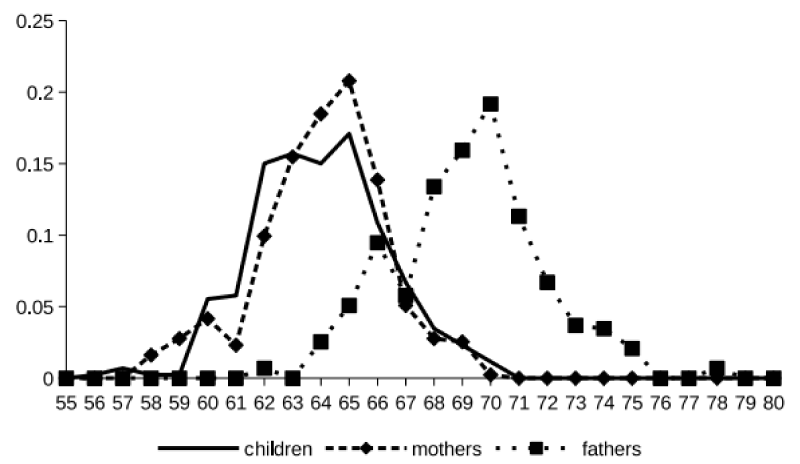
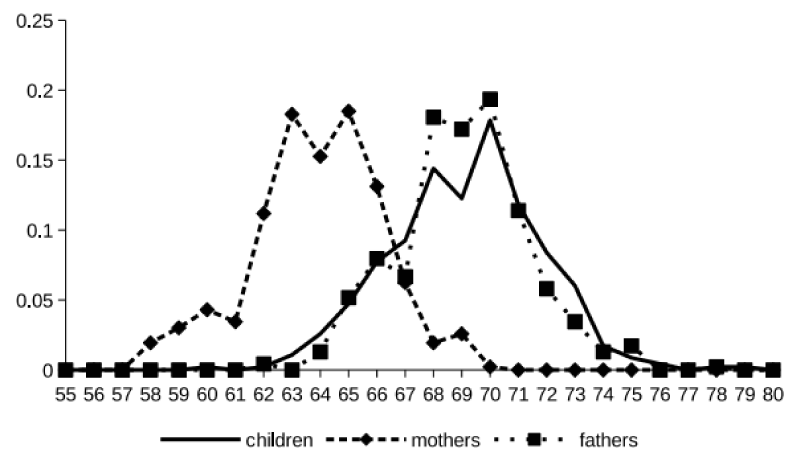
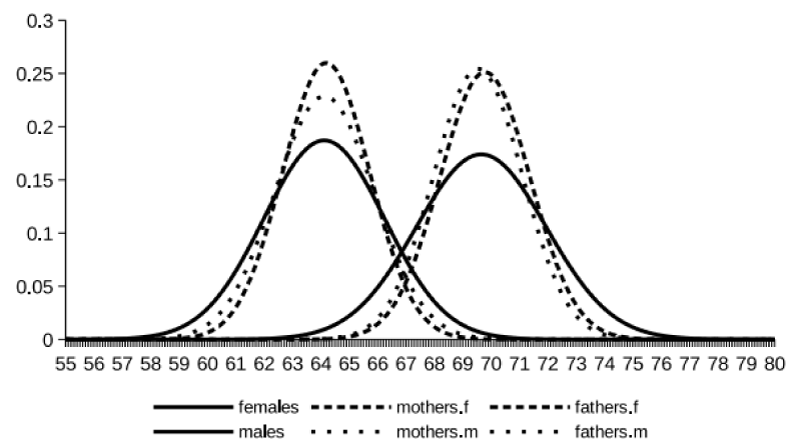
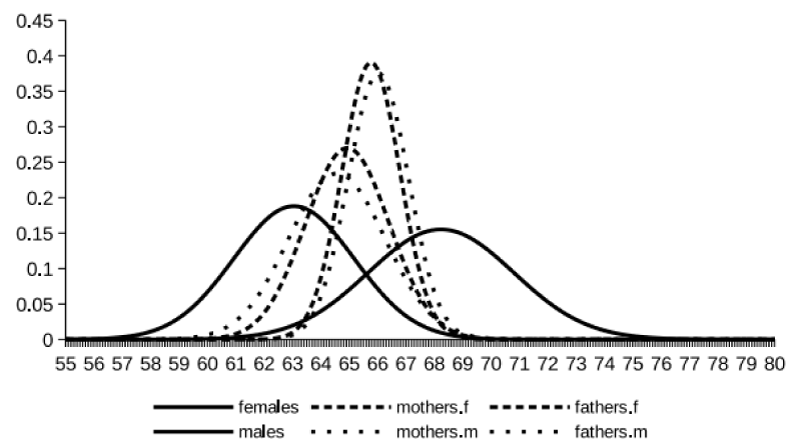
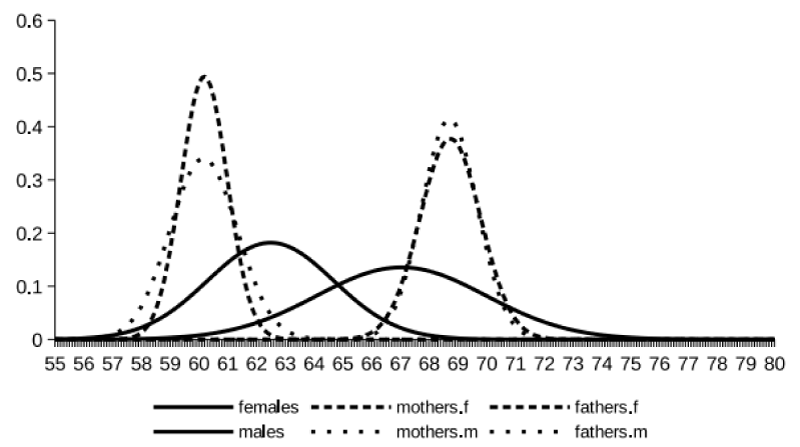
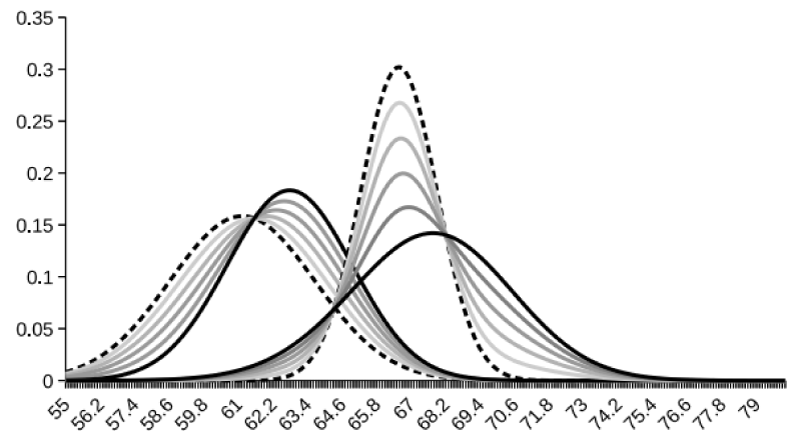

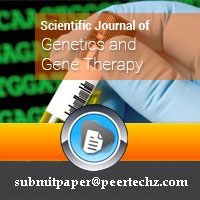
 Save to Mendeley
Save to Mendeley
